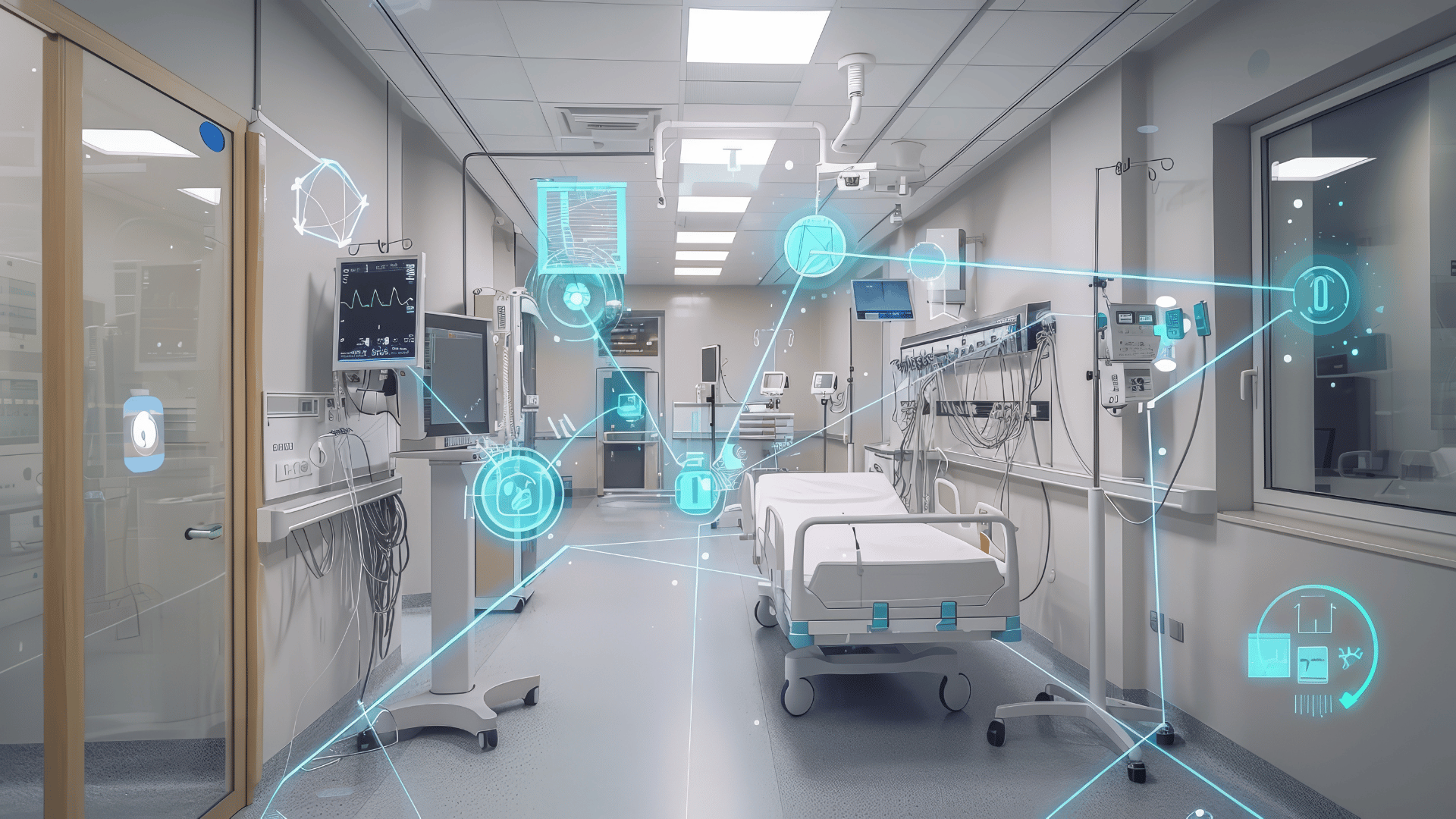The Reality of AI in Healthcare: Supplement, Not Substitute

AI is revolutionizing the healthcare industry, but can’t replace the human touch. It predicts complications and analyzes data at lightning speed, while clinicians interpret insights, provide comfort, and deliver care with empathy. Together, they create smarter, more personalized outcomes. This article explores the benefits, limitations, and ethical considerations of AI in healthcare.
AI Benefits and Limitations in Different Healthcare Areas
AI empowers clinicians, administrators, and health systems to work more efficiently. It optimizes staffing, enhances surgical precision, supports early disease detection, and transforms patient monitoring into actionable insights. Yet human oversight is still essential to address challenges like data quality, bias, integration, and cost.
AI in Healthcare Staffing
Every filled shift reflects the complex challenges healthcare organizations face daily. From meeting compliance standards and managing unpredictable staffing needs to maintaining care quality and tackling operational inefficiencies, staffing is more than scheduling—it’s a high-stakes balancing act that affects patient outcomes. Here are three ways AI helps in healthcare staffing:
1. Recruitment Processes
AI transforms how healthcare organizations hire talent. Automated resume screening quickly identifies qualified candidates, while intelligent matching aligns skills, experience, and preference with open roles to boost job satisfaction and retention. Automated job postings reach the right audience fast, and AI-powered applications create a smoother experience for job seekers. The result? A faster, more efficient hiring process that saves time without sacrificing quality or connection.
While AI can drastically streamline the recruitment process, it still has limitations. Bias in AI algorithms can unintentionally disadvantage certain candidates, and overreliance on automated screening may overlook skilled applicants who don’t fit predefined patterns. AI’s decision-making can lack transparency, making it hard to justify choices or ensure compliance with employment regulations. Finally, implementing AI solutions often requires significant investment in technology and training, which can be a barrier for some healthcare organizations.
2. Workforce Management
AI helps healthcare organizations manage their workforce more strategically. Predictive analytics anticipate patient volumes and staffing needs, allowing managers to schedule nurses and other staff more efficiently. AI tools optimize workflows, balance workloads, and reduce burnout by ensuring no team member is overextended. The result? Smooth operations that improve patient care delivery while also controlling labor costs.
Despite its undeniable benefits, AI in healthcare workforce management comes with challenges. Algorithms may not fully account for the nuances of patient care or individual staff strengths, leading to suboptimal scheduling. Overreliance on AI can reduce human judgment in critical staffing decisions. Bias in data or predictive models may unfairly affect shift assignments. Additionally, implementing AI solutions requires investment in technology, staff training, and integration with existing systems, and handling sensitive workforce data raises privacy concerns.
3. Operational Efficiency
AI can reduce administrative tasks and give leaders a clear, enterprise-wide view of workforce needs. Automated processes cut down on manual scheduling, approvals, and paperwork, freeing managers to focus on strategic decisions and patient care. The result? With comprehensive visibility across departments, healthcare organizations can respond quickly to staffing gaps and optimize resource allocation, making operations more agile and efficient.
Even with these benefits, AI in operational efficiency has limitations. Systems may struggle to account for unexpected events or nuanced human factors, like staff preferences or sudden patient surges. Overreliance on AI can reduce flexibility and human oversight, while integration with existing systems can be complex and costly. Maintaining data privacy and ensuring accurate, bias-free insights are ongoing concerns for healthcare organizations adopting AI solutions.
Discover how ShiftMed leverages AI to transform healthcare staffing and workforce management. Streamline shifts, optimize workflows, and empower your team. Book a demo to experience the future of staffing today.

AI in Robotic Surgery
From guiding complex surgeries to powering realistic training simulations, AI boosts outcomes, streamlines workflows, and sharpens surgical skills. Here are three ways AI supports robotic surgery:
1. Image-Guided Procedures
AI enhances image-guided procedures by providing precise, real-time insights during surgery. It helps clinicians accurately locate tumors and guides dissection, improving surgical precision and reducing error risks. The result? By analyzing complex imaging data quickly, AI helps surgeons make informed decisions that can lead to better patient outcomes and shorter recovery times.
Despite these advantages, AI in these procedures still requires a human fail-safe. Algorithms may misinterpret imaging data, especially in unusual or complex cases, which could affect surgical decisions. Overreliance on AI might reduce critical human judgment, and integrating AI tools into existing surgical workflows can be costly and require extensive training.
2. Autonomous Suturing
AI allows robots to perform consistent, precise stitches with minimal human intervention during surgical procedures. The result? By analyzing tissue characteristics and movement in real time, AI helps reduce variability, speed up procedures, and support surgeons in complex or repetitive tasks, ultimately enhancing patient outcomes.
However, autonomous suturing comes with limitations. AI systems may struggle with unexpected tissue variations or complications, requiring constant human oversight. High costs and technical complexity can make implementation difficult, and integrating these systems into surgical workflows demands extensive training.
3. Surgical Training
AI transforms surgical education by providing realistic simulations and real-time feedback. Trainees can practice complex procedures, receive instant performance analysis, and refine their skills in a safe, controlled environment. The result? This targeted training accelerates learning, improves technique, and prepares surgeons for real-world operations.
While powerful, AI-based training has limitations. Simulations may not fully replicate the unpredictability and nuance of live surgery, and overreliance on AI feedback can reduce the development of critical decision-making skills. High costs, technical setup, and the need for ongoing updates can also pose barriers for institutions adopting these tools.
AI in Healthcare Diagnostics
AI turns complex data into actionable insights. It helps clinicians detect diseases earlier and tailor treatments to each patient, improving accuracy and efficiency. Here are two ways AI assists in healthcare diagnostics:
1. Early Disease Detection
AI analyzes medical imaging data from MRIs, CT scans, and X-rays with speed and precision that surpass human capabilities. From grading brain tumors to classifying cardiovascular disease to assessing breast cancer risk, it detects subtle patterns and early signs of disease that clinicians might otherwise miss, supporting earlier diagnosis and timely interventions. The result? AI helps improve accuracy, prioritize critical cases, and enhance patient outcomes by assisting clinicians in interpreting complex imaging data.
Despite its potential, AI in healthcare diagnostics has limitations. Algorithms can produce false positives or negatives, particularly in rare or atypical cases, which may affect clinical decisions. Overreliance on AI could reduce critical human oversight, and integrating AI into existing imaging workflows requires substantial investment, training, and quality control. Ensuring data privacy and managing biases in training datasets are additional challenges that healthcare organizations must address.
2. Personal Treatment Plans
AI quickly analyzes vast amounts of patient data, uncovering patterns, predicting outcomes, and tailoring treatments to individual needs. The result? AI helps clinicians make informed, data-driven decisions that improve patient outcomes and care efficiency, from identifying the most effective therapies to anticipating potential complications.
While promising, AI-driven personalization has limitations. Algorithms rely on high-quality, diverse datasets; biases or data gaps can lead to inaccurate predictions. Overreliance on AI may overshadow clinical judgment, and integrating these tools into care workflows can be complex and costly. Protecting sensitive patient information and ensuring compliance with privacy regulations are critical challenges in this space.
AI in Patient Monitoring
AI continuously analyzes data from devices, sensors, and health records to track patients in real time, shifting monitoring from reactive to proactive. This improves safety, outcomes, and efficiency. Here are two ways AI supports patient monitoring:
1. Predictive Alerts
AI enables predictive alerts that help clinicians anticipate complications before they occur by analyzing trends in vital signs and historical data. The result? It can forecast risks such as sepsis or heart failure, allowing providers to take preventive action rather than reacting to emergencies.
While powerful, these predictive alerts can generate false alarms or overlook atypical cases, leading to alert fatigue or missed interventions. Reliable performance depends on high-quality data and seamless integration with clinical workflows, which can be complex and costly.
2. Workload Reduction
AI lightens the burden on clinicians by automating routine monitoring tasks and filtering large volumes of patient data. The result? Instead of manually tracking vitals, staff receive prioritized alerts when a patient’s condition changes, allowing them to focus on critical cases and direct care where needed most.
Automation can introduce new pressures if alerts are inaccurate or poorly tuned, leading to overreliance or alert fatigue. Effective use of AI requires proper training, trust in technology, and reliable data integration to ensure it truly supports clinical workloads.
Ethical Considerations of AI in Healthcare
Using AI in healthcare raises critical ethical questions. Algorithms can be biased, and “black box” models challenge transparency and trust. Protecting patient privacy, ensuring informed consent, and clarifying accountability are essential. Overreliance on AI can undermine clinical judgment, and its high costs may worsen care disparities. Ethical, equitable, and safe care depends on balancing AI with human oversight.
Here are some ethics-based questions to consider when implementing AI into your hospital or health system operations:
Bias and Equity: Is our AI trained on diverse, representative data to ensure fair patient treatment
Transparency: Can clinicians and patients understand how AI reaches its recommendations?
Patient Privacy: How is our organization collecting, storing, and sharing patient data?
Accountability: How will we audit AI performance and address errors?
Clinical Oversight: How do we ensure AI supports, not replaces, human judgment in critical decisions?
Access: Could the cost or technical requirements of AI limit access for some patients or facilities?
Data Use: Do we use patient data for the intended clinical purpose only? Are there safeguards against misuse?
The Reality of AI in Healthcare Conclusion
As you can see, AI can reshape healthcare from the inside out, streamlining workforce operations, supporting clinical decisions, and improving patient outcomes. But its actual value lies in partnership, not replacement. When paired with human expertise, empathy, and judgment, AI becomes a multiplier that helps clinicians deliver smarter, faster, and more equitable care. The future of healthcare depends not on choosing between humans and technology, but on bringing them together to achieve better care for all.